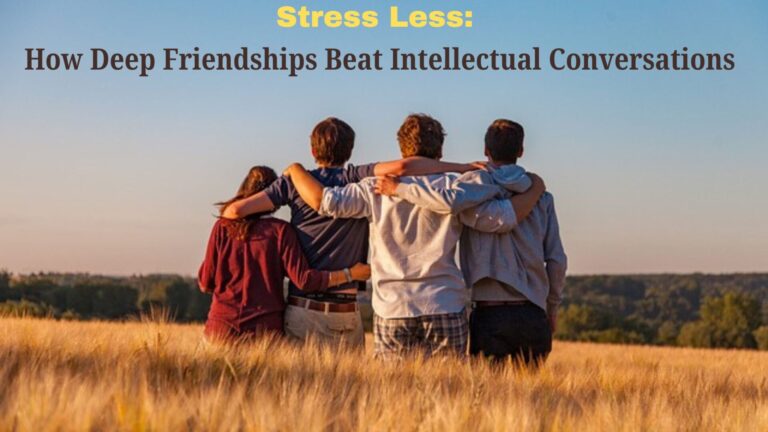Introduction:
Silence and Smile: The Twin Keys to Resolving and Preventing Problems

In the context of the rapidly evolving contemporary world, it is imperative to acknowledge the profound influence of seemingly insignificant actions. Among these, two potent instruments emerge: silence and a smile. Frequently undervalued, these twin keys possess the capacity to play a pivotal role in the resolution and prevention of conflicts, spanning both personal and professional realms. In this discourse, we shall delve into how silence and a smile have the potential to transform one’s approach to conflict and problem-solving.
The Power of Silence and Smile
The Power of Silence
- Silence as a Problem Solver:
- Silence can be a powerful tool in resolving conflicts.
- During heated discussions, staying silent can calm emotions and prevent the situation from escalating.
- This pause allows all parties to reflect on their positions, leading to more thoughtful and productive conversations.
- Silence as a Listening Tool:
- Active listening is key to understanding another person’s perspective.
- By remaining silent and truly listening, you show respect and empathy.
- This not only helps you gather important information but also builds trust and facilitates meaningful dialogue.
- Silence as a Reflection Tool:
- Taking time for silent reflection is essential for personal growth and decision-making.
- It allows you to process information, assess your feelings, and consider various solutions to a problem.
- This introspection often leads to more rational and well-thought-out decisions.
The Power of a Smile
- The Power of a Smile in Conflict Resolution: A genuine smile can act as a preventive measure in potentially tense situations, diffusing tension and creating a positive atmosphere. It signals friendliness and openness, making others feel more comfortable and less defensive, thereby reducing the likelihood of conflicts.
- Smiling: A Universal Connector: Smiling transcends language barriers, bridging gaps and building connections. In professional settings, a smile fosters teamwork and collaboration, creating a positive work culture where employees feel valued and motivated. In personal relationships, a smile strengthens bonds and enhances communication.
- Smiling as a Stress Reliever: Even when you don’t feel like it, smiling can reduce stress and improve your mood. Smiling triggers the release of endorphins, the body’s natural feel-good chemicals. Maintaining a positive attitude through smiling allows you to approach problems with a clearer and more optimistic mindset.
Integrating Silence and Smile in Daily Life
- Practicing Mindful Silence:
- Incorporate moments of silence into your daily routine.
- Engage in meditation, quiet walks, or simply pause before reacting in conversations.
- These moments help center your thoughts and provide clarity.
- Smiling Intentionally:
- Make a conscious effort to smile more often.
- Start your day, greet others, and face challenges with a smile.
- Observe how it positively impacts your interactions and overall well-being.
- Balancing Silence and Expression:
- While silence is powerful, effective communication is essential.
- Identify when to speak and when to listen.
- Combine thoughtful words with silence, and enhance your interactions with a smile.
Can practicing silence and smiling lead to better mental health?
The practice of maintaining silence and engaging in smiling can substantially contribute to enhanced mental well-being. Allow me to elaborate on how:

1. Stress Reduction:
- Silence and smiling effectively reduce stress levels.
- Moments of silence offer respite from constant stimuli, allowing the mind to relax and rejuvenate.
- Smiling triggers endorphin release, promoting happiness and reducing stress and anxiety.
2. Enhanced Mood:
- Silence and smiling improve mood by promoting positive emotions.
- Moments of silence foster mindfulness and introspection, leading to a sense of calm and contentment.
- Smiling, even forced initially, can trick the brain into feeling happier by activating facial muscles associated with positive emotions.
3. Strengthened Relationships:
- Silence and smiling strengthen social connections and improve relationships.
- Silence encourages active listening and empathy, fostering deeper understanding and intimacy.
- Smiling communicates warmth, friendliness, and approachability, making interactions more enjoyable for both parties.
4. Resilience Building:
- Practicing silence and smiling helps build resilience in the face of adversity.
- Moments of silence allow for reflection and self-awareness, essential for developing coping strategies and adapting to challenges.
- Maintaining a positive outlook through smiling can help individuals bounce back from setbacks more effectively.
5. Promotion of Positive Thinking:
- Silence and smiling promote a positive mindset, crucial for mental well-being.
- Moments of silence encourage mindfulness and present-moment awareness, helping individuals focus on the positives and reduce negative thoughts.
- Smiling can shift perspective and reframe situations in a more optimistic and resilient light.
Incorporating practices of silence and smiling into daily life can have profound benefits for mental health. Prioritizing moments of silence and smiling can cultivate greater well-being and resilience to cope with life’s challenges.
How do silence and smiling contribute to emotional intelligence?
Silence and smiling significantly contribute to the development and expression of emotional intelligence.
Silence:

- Self-Awareness: Silence allows individuals to reflect and become aware of their own emotions and thoughts, which is essential for developing emotional intelligence.
- Self-Regulation: Silence provides individuals with the space and time to manage their emotions effectively, leading to better emotional control.
- Empathy: Silence enhances empathy by promoting active listening and deep understanding of others’ emotions.
- Social Skills: Mastering the art of silence improves communication and interpersonal interactions, leading to stronger relationships and rapport.
Smiling:
- Social Awareness: Smiling signals positive intentions and emotions to others, facilitating smoother social interactions and rapport building.
- Empathy: A genuine smile fosters empathy by creating a shared emotional experience that enhances understanding and compassion.
- Relationship Management: Smiling effectively manages relationships and resolves conflicts by diffusing tension and promoting cooperation.
- Influence and Leadership: Smiling enhances influence and leadership skills by inspiring trust, confidence, and loyalty in others, leading to effective motivation and team inspiration.
In conclusion, both silence and smiling have significant contributions to various aspects of emotional intelligence. By incorporating these practices into their daily lives, individuals can enhance their emotional intelligence, thrive in personal and professional settings, and nurture meaningful relationships.
How can silence and smiling enhance conflict resolution skills?
The Power of Silence and Smiling in Conflict Resolution
Silence and smiling are two powerful tools that can significantly enhance conflict resolution skills. Here’s how:
Silence:
- Promotes Active Listening: Silence encourages individuals to listen attentively, without interrupting, to the perspectives of others. This creates space for fully absorbing and understanding viewpoints, fostering mutual respect and empathy.
- Facilitates Emotional Regulation: Silence provides a moment to pause and regulate emotions before responding. It prevents impulsive reactions driven by anger or frustration, leading to more rational and constructive communication.
- Encourages Reflection: Silence encourages introspection and reflection, allowing individuals to consider the underlying causes of conflict and their own contributions to the situation. This leads to greater clarity, insight, and effective problem-solving.
- Creates Space for Resolution: Silence creates a calm and non-threatening atmosphere conducive to open dialogue and resolution. It allows individuals to brainstorm solutions, negotiate compromises, and reach mutual agreements without the pressure of immediate responses.
Smiling:
- Builds Rapport: A genuine smile can establish rapport and build positive relationships even amidst conflict. It communicates goodwill and friendliness, diffusing tension and creating a cooperative atmosphere.
- Reduces Defensiveness: Smiling helps to reduce defensiveness and facilitate a more receptive attitude towards conflict resolution. It signals openness and approachability, encouraging others to lower their guard and engage in constructive dialogue.
- Promotes Empathy: Smiling fosters empathy by acknowledging the humanity and dignity of others. It conveys understanding and compassion towards the perspectives and experiences of others, paving the way for empathy-based conflict resolution approaches.
- Encourages Collaboration: Smiling can encourage collaboration and teamwork by fostering a positive and supportive atmosphere. It signals a willingness to work together towards finding mutually beneficial solutions, facilitating cooperation and compromise.
In summary, silence and smiling can significantly enhance conflict resolution skills by promoting active listening, emotional regulation, reflection, and problem-solving. They also foster rapport, reduce defensiveness, promote empathy, and encourage collaboration. By incorporating these practices into conflict resolution processes, individuals can navigate conflicts more effectively and promote positive outcomes for all parties involved.
Conclusion
Silence and a smile can enhance problem-solving and relationships. Pausing and reflecting leads to informed decisions, while a smile disarms conflicts and creates harmony.
FAQs
1. How does silence help in resolving conflicts?
Silence helps in resolving conflicts by providing a pause that allows emotions to settle, giving everyone involved time to reflect and reconsider their positions. This can lead to more thoughtful and productive conversations.
2. Why is active listening important, and how is silence involved?
Active listening is important because it demonstrates respect and empathy, helping to build trust and gather important information. Silence is a crucial component of active listening, as it allows the speaker to share their thoughts without interruption.
3. Can smiling really prevent conflicts?
Yes, smiling can prevent conflicts by creating a positive and friendly atmosphere. A genuine smile can make others feel more comfortable and less defensive, reducing the likelihood of conflicts.
References
- Brown, B. (2018). Dare to Lead: Brave Work. Tough Conversations. Whole Hearts. New York: Random House. This book explores the importance of vulnerability, including the role of silence and empathy in leadership.
- Goleman, D. (1995). Emotional Intelligence: Why It Can Matter More Than IQ. New York: Bantam Books. Goleman discusses how emotional intelligence, which includes the ability to manage emotions and maintain positive interactions, impacts personal and professional success.
- Fredrickson, B. L. (2009). Positivity: Top-Notch Research Reveals the Upward Spiral That Will Change Your Life. New York: Crown Publishing Group. This book highlights the power of positive emotions, including smiling, and their impact on life outcomes.








